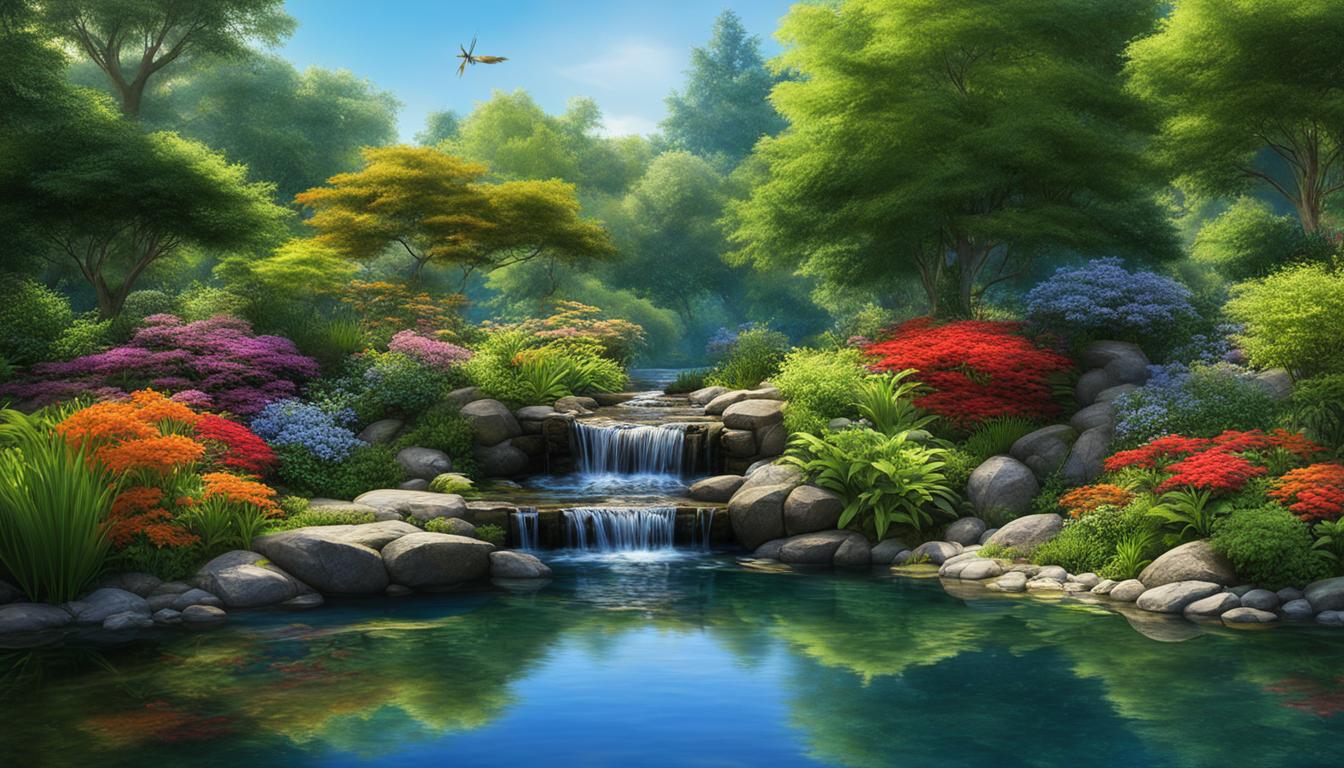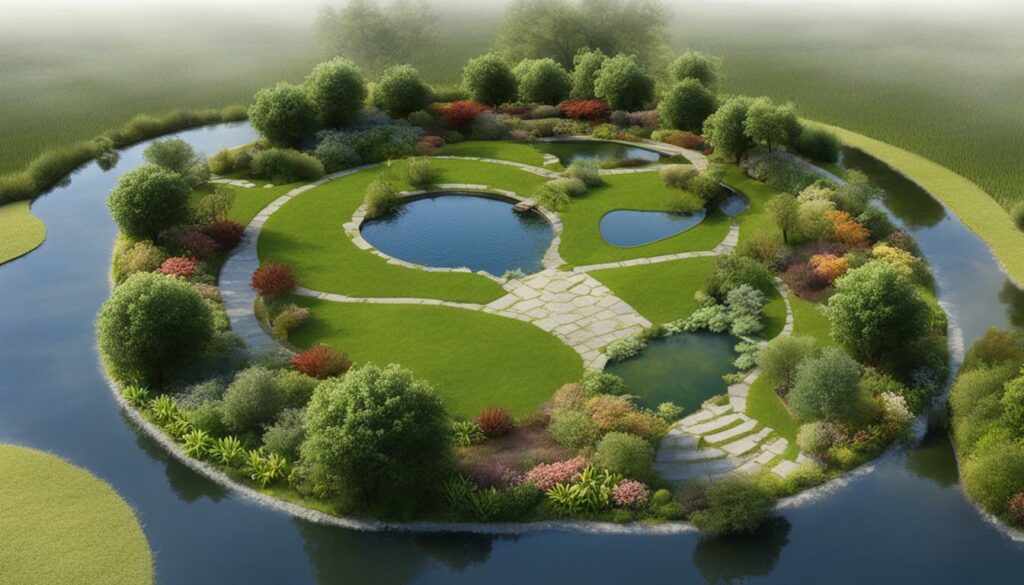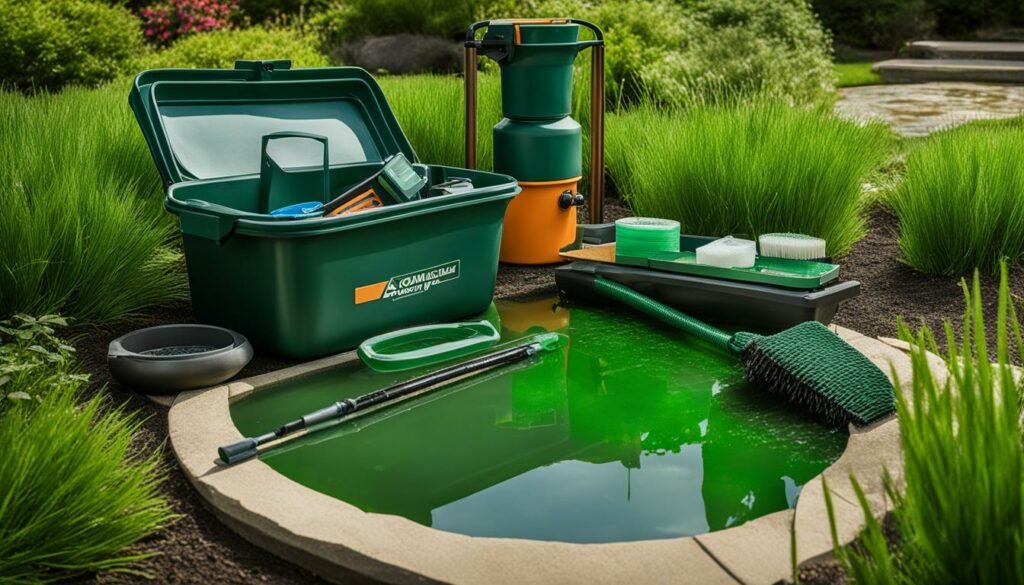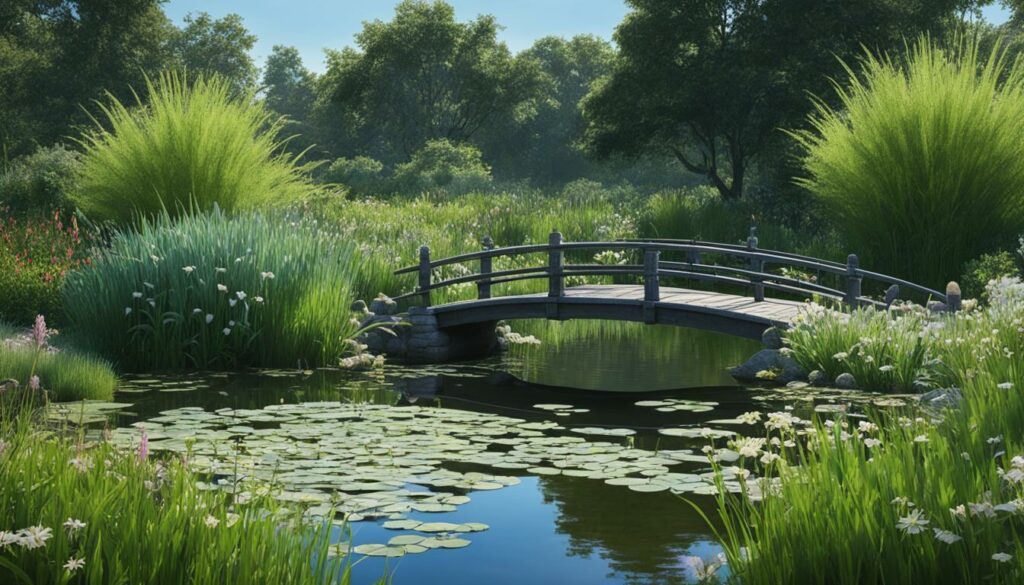
The integration of serene garden ponds into landscape design is an art that transforms outdoor spaces into tranquil havens. As more individuals seek a sanctuary from the hustle and bustle of daily life, the subtle murmur of a water feature can offer the soothing ambiance desired. The allure of a garden pond is not only in its ability to create a peaceful atmosphere but also in enhancing the visual appeal of any garden space. Whether it is the mesmerizing charm of koi ponds, the elegance of aquatic plants, or the reflective surface of water gardens, each element plays a pivotal role in crafting an enchanting landscape.
With thoughtful pond design, these aquatic landscapes can serve as a dynamic focal point or harmonize as a subtle addition to the natural surroundings. Envision lily pads floating gently on the surface, koi gliding gracefully below, and the resonance of water cascading over rocks—each detail contributes to the creation of a serene and beautiful garden retreat. The design choices are as limitless as the benefits, promising a convergence of aesthetics and tranquil respite in your own backyard.
Key Takeaways
- Designing a garden pond can introduce a sense of tranquility and beauty into both private and public landscapes.
- Serene garden ponds can act as a restorative element, contributing to the overall ambiance of outdoor settings.
- Integrating water features like koi ponds and water gardens demands careful consideration of both design and functionality.
- Ponds can become the center of attention or blend seamlessly with the existing flora and fauna, eliciting a naturalistic essence.
- The presence of aquatic plants and fish not only elevates the visual aesthetics but also plays a crucial role in maintaining a balanced ecosystem.
- Expert pond design considers the interplay of elements to create a cohesive and inviting garden feature.
Understanding the Basics of Garden Pond Design
Embarking on the journey of creating a tranquil backyard pond begins with a deep understanding of pond design principles. A well-designed pond not only serves as an oasis of serenity in your backyard but also plays a critical role in the local ecosystem. Let’s delve into the essential aspects of choosing the appropriate pond location, determining the pond size and depth, and fostering a balanced aquatic ecosystem.
Choosing the Right Location for Your Pond
The quest for the perfect spot for backyard ponds is pivotal to ensuring their long-term success. The ideal location is influenced by a variety of factors, starting with sunlight exposure—essential for the health of aquatic plants and animals. Accessibility is another key aspect, both for the enjoyment and maintenance of the pond. Lastly, safety concerns, such as the proximity to electrical sources and the potential for flooding, must also be taken into account.

Considerations for Pond Size and Depth
Finding the perfect balance in pond size and depth is an art that takes into consideration the intended use of your water feature. Whether you’re envisioning a small, serene spot for meditation or a large habitat for koi or other fish, local climate and maintenance requirements play a crucial role. Depth, in particular, determines the types of wildlife your pond can support and its resilience to weather changes.
Creating a Balanced Ecosystem
- A balanced aquatic ecosystem is vital for the clarity and purity of your pond’s water.
- It involves a harmonious relationship between the fish, plants, and microorganisms within the pond.
- This equilibrium ensures the well-being of your pond’s aquatic plants and wildlife, as well as the overall health of the pond environment.
Planning and installing a garden pond can indeed transform your landscape, but success hinges on a clear understanding of pond design principles. By choosing the right location, tailoring pond size and depth to your needs, and fostering a balanced aquatic ecosystem, your backyard pond will flourish for years to come.
Essential Equipment for a Thriving Garden Pond
Maintaining a vibrant backyard pond necessitates an ensemble of specialized pond equipment. Vital to garden pond maintenance, these tools work in harmony to provide an ideal aquatic environment. Among them, three core components stand out: filters, pumps, and aeration systems. Each plays a critical role in fostering clear water, ensuring ample circulation, and supporting a thriving ecosystem for both plants and fish.

- Filters: Filters are the cornerstones of a clean and healthy pond. Mechanical filters remove debris, while biological filters use beneficial bacteria to break down toxins. Investing in a high-quality filter system reduces maintenance time and keeps the water crystal clear.
- Pumps: Pumps are fundamental for water circulation, preventing stagnation and distributing nutrients evenly throughout the pond. A well-chosen pump will match the pond’s size and the needs of the aquatic life within, ensuring a dynamic water flow.
- Aeration Systems: Adequate oxygen levels are critical, and aeration systems introduce necessary oxygen to the pond’s water. Not only does this benefit fish and plant life, but it also promotes the decomposition of organic matter, reducing the likelihood of algae blooms.
Together, these components of pond equipment form a symbiotic system that is essential for a healthy and aesthetically pleasing backyard pond. Without such equipment, garden pond owners may find themselves battling against murky water, poor plant health, and unhappy fish. Consistent maintenance supported by the right tools can transform any garden pond into a serene aquatic retreat.
Incorporating Aquatic Plants into Your Water Garden
Enhancing your water garden with aquatic plants not only increases its beauty but also contributes significantly to the ecosystem’s balance. Carefully selected vegetation can transform a basic pond into a flourishing water feature replete with natural allure and wildlife activity. Making informed choices about plant varieties, employing strategic planting techniques, and adhering to diligent vegetation maintenance can elevate the aesthetics and health of your water garden.

Selecting Plants for Beauty and Function
When selecting aquatic plants, consider species that serve a dual purpose: they should complement the visuals of your pond while also fulfilling functional roles within the ecosystem. For instance, water lilies add a touch of elegance and provide shade that can benefit fish and help control algae growth. Submerged plants, such as Anacharis, work behind the scenes oxygenating the water and providing habitat for aquatic creatures.
Planting Techniques for a Natural Look
Achieving a natural looking pond hinges on the planting techniques you adopt. Varied planting depths cater to different plant species and support a more diverse habitat. Contouring the pond’s edge with marginal plants and letting some vegetation drape over into the water can create a seamless transition between the pond and the surrounding garden. Additionally, strategic placement of stone features and driftwood can provide support and add to the holistic natural theme.
Maintenance Tips for Aquatic Vegetation
Regular vegetation maintenance is crucial for a thriving aquatic garden. Keep invasive species at bay with careful monitoring and prompt removal. Prune dead or overgrown foliage to prevent decay, which can lead to imbalances in water quality. Dividing plants will not only control their growth but also ensure they continue to provide essential filtration and habitat functions within your water garden.
- Inspect and trim plants to sustain healthy growth and avoid over-shading.
- Regularly harvest or thin fast-growing species to maintain an open water surface.
- Monitor water parameters to detect any signs of imbalance early on.
The Role of Fish in Garden Ponds
In the realm of backyard ponds, the inclusion of fish is not merely a visual delight but a pivotal element in establishing a self-sustaining pond ecosystem. Vividly colored koi and the shimmering scales of goldfish not only add movement and life to your water garden but also play a crucial role in the overall ecological balance. These aquatic residents contribute to the reduction of algae, provide essential nutrients to aquatic plants through their waste, and can even aid in pest control by feasting on various larvae and insects.
Nevertheless, integrating fish into ponds warrants careful planning to achieve a harmonious environment. Stocking levels must be judiciously managed to prevent overpopulation, which can lead to diminished oxygen levels and poor water quality. Moreover, feeding routines need to be regulated since overfeeding can cause waste buildup and nutrient imbalances, jeopardizing both fish health and water clarity. An informed approach to fish care, from diet selection to healthcare practices, is fundamental to fostering a thriving aquatic community within your garden pond.
Undoubtedly, garden pond enthusiasts will encounter challenges, such as maintaining optimal water conditions and preventing diseases. Yet, these can be mitigated through proper pond design, regular monitoring of water parameters, and the installation of adequate filtration systems. Therefore, the decision to introduce fish to your pond is not merely an aesthetic one; it is a commitment to creating and maintaining a dynamic aquatic life system that enhances the natural beauty and ecological integrity of your backyard oasis.








